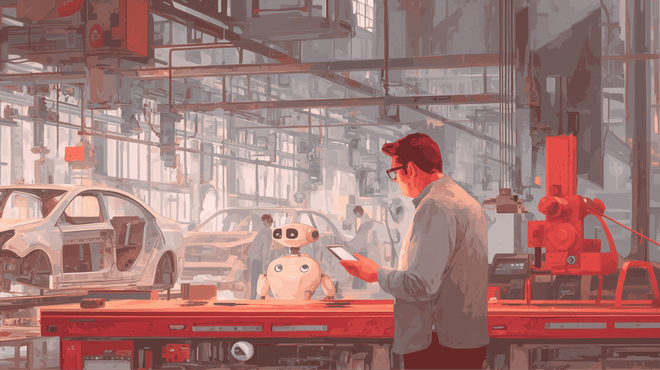The software development life cycle, known as SDLC, is a scientific and step-by-step engineering process of building informative software.
It includes various phases with tight activities to deliver the best result:
- Requirements
- Planning
- Designing
- Prototyping
- Developing
- Testing
- Delivery
- Maintenance
In this short walkthrough of the software development life cycle, we explore the basics, concepts, inputs, and outputs of the SDLC.

Software development life cycle phases
1. Requirements
This is one of the most important software development life cycle phases where stakeholders sit down to discuss the purpose of the software. What goal is the software intended to achieve and what are the required specifications to fulfill that goal? This stage also enables the team to identify and address every possible problem early in the development process.
2. Planning
Once the requirement phase is done, it is time to start planning the entire software development lifecycle process. This is where a team of business analysts, product managers, engineers and quality assurance personnel all sit down and analyze the required resources, risks, and costs involved in the process, as well as determining how to overcome those risks. The team looks at the needed technologies, features, project constraints, available budget, and the timeline for when the project needs to be completed.
This stage will help you build a system that adds analytics and issue tracking management. This will be beneficial to both your team and the users. In this stage, developers also have the opportunity to plan and release a minimum viable product (MVP) without putting more time into unnecessary work.
In this digital era, companies need to do away with the fly-by-night approach which yields low-quality results. Instead they must turn to a process that will help build and support a successful project in the long run. This is where SDLC proves to be beneficial. At this stage, it is crucial to have an MVP as it allows for agile development cycles. This also implies that your product attracts users faster who can provide crucial feedback which in turn will help you improve your offering during the next development cycle. An MVP helps you strip all the extra features away and build them over time while working on the next cycle. This ensures a faster turnaround time and allows your team to get a product that you can then flesh out at the same time.
3. Designing
After planning, it’s time to get to work with the third step which is designing. This is where the product managers, UX/UI designers and developers sit down to design the different parts of the software based on each requirement. The design phase covers components such as the architecture, user interface, security, and the programming languages that will be used to write the software. In the end, the design is intended to describe how the front-end of the application will look, behave, and communicate with the database.
Read More: [Business Analysis] What Are the Required Artifacts to Begin Development?
4. Prototyping
This is the MVP stage where a test sample is produced to showcase the overall concept of the project. The purpose of the prototype sample is to test the design and user. It will also give a clear picture of whether the original idea was good or bad. So, the client will determine what changes need to be made to make the product better.
5. Developing
After the prototype is tested and confirmed, it is development time. This phase is where all the engineers follow a blueprint for creating the software based on the requirements. This blueprint describes a well-defined file nomenclature, coding, and naming styles. It is Important to note that the whole process is divided into sprints.
6. Testing
After developing the prototype version of the software, it’s time to test it. It is important to always test every new product to find out if there are deficiencies and defects. Some of those are blind spots to developers during the development stage. But when the QA specialists test the software, it will discover every error, allowing them to fix before launching the software.
7. Delivery
After testing and fixing every glitch here and there, it’s time to deliver. Here the software is delivered to the client’s recommended deployment environment for users to start using. At this point, different clients may have additional delivery requirements. Some may want the software to be pre-launched for stakeholders to test and try it out before it is fully launched into the market. Others may want it to be launched directly into the marketplace while keeping a close watch on errors and fixes.
8. Maintenance
Nothing is always perfect at first sight. Each phase of the software development life cycle has a crucial role to play. Therefore, each product deployment has a maintenance team ready to respond to any technical or post-production emergency. In the event of an issue, the maintenance team immediately intervenes with the solution.
SDLC models & methodology
1. The Iterative Model
The Iterative Model is all about repeating the software process. This software development life cycle model allows the engineers to develop newer versions of the software in a lesser time frame. No need to go through the requirement stage, but rather make a few changes and a new product is developed. The model also allows developers to constantly provide updates for the software.
2. The Agile Model
The Agile Model handles every project distinctively through a method that is tailored to suit the requirements of each project. The agile model focuses on two areas: cross-functional development and regular release. Agile is based on incremental and iterative development. There are various types of agile, in this article we are focused on the two most popular choices.
- Kanban is a good option for projects whose releases are not required to be deployed for a certain period. An example of this is when the releases include different time-frames and or sizes, or the terms of the releases are not as important as the result. The flexibility in Kanban allows the possibility to easily deploy changes at once while allowing regular sprint time to be over. The workflow process of Kanban is strict because each development stage has a task limit. This is how the Kanban process works.
- Scrum methodology involves retrospective, planning, and daily meetings. We practice this model all throughout our projects because it brings order to our workflow. Its flexibility enables us to meet all of our clients’ requirements and allows us to deliver the most needed features promptly (two weeks span). This gives us time to get feedback from users and clients while the software is in use. But the product owner must come up with the backlog to give priority to the task.
3. The Waterfall Model
This model comprises a separation of tasks from requirements, design, development, and test. In this model, each stage must be completed before the next stage can start. The next stage cannot start when the previous stage is not completed. And the sequence must be adhered to from the beginning to the end of the project. It’s a model that most bigger projects adopt. But the problem here is that it is quite inflexible, and we don’t feel comfortable using it in our projects. Because software development is a very intimate project that requires maintenance at the end of the day, the waterfall model’s inflexibility may result in tons of required improvements at a later date.
4. V-Shaped Model
This model may not be as flexible as the Agile and the Iterative model, but it is the best model. In this SDLC model, each stage is tested and approved before moving to the next stage. This makes for a safer workflow where errors are identified and fixed at the beginning of the project and not at the end. As much as software performs best after repeated failures and fixes, we still have to give our best.
5. The Spiral Model
This model is very flexible and is more like the Iterative model because it also features repetition in the process. It is a combination of the architecture stage and the prototyping stage. The spiral model has different phases throughout, where each product is released then refined. The prototype can also be built during each stage to provide the possibility of detecting and managing risk. It is mostly used with larger, more expensive projects.
6. Big Bang Model
This model has no defined process, neither does it require much scheduling and planning. The only thing it requires is plenty of funds and time because coding is time intensive. It is a model that is mostly used on small and academic projects. The big bang model is good for corporations that are working on a project without specific requirements or release date.
Conclusion
Getting the right hands on your software project is the best way to translate your business ideas into a practically functional structure.
We develop software with higher speed, greater flexibility, and effective productivity. Our team will help you choose the best SDLC model that is right for the success of your project.




